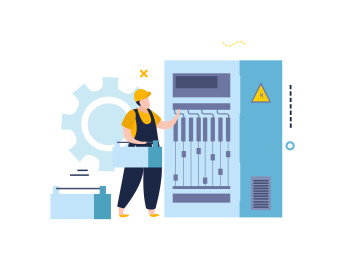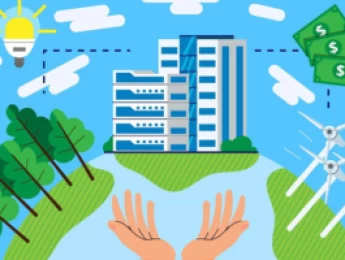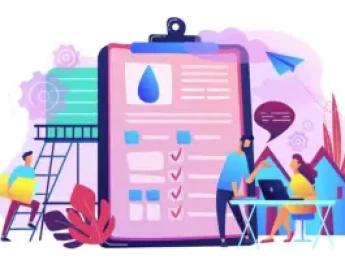Industrial electrical networks are essential for the national electricity system to function efficiently. Many steps can be taken to ensure these are in a consistent working condition. Protecting earthing methods have proven highly effective at reducing risks and preventing harm to individuals working within the system.
The earthing process is incredibly important. Those involved must be competent in the equipment and tools to be used throughout the process. The type of shielding, cabling, and specific practices used can greatly impact the system's safety and effectiveness. Alongside this equipment, the correct PPE should always be used to guarantee personal safety.
Furthermore, it is crucial to have a strong understanding of external factors such as soil resistance and the electrical grid. These will determine the ideal steps to be taken and how best to implement the necessary protective earthing.
Upon completion of this course, participants will be able to:
- Understand the importance of system & protective earthing within an industrial electric network.
- Review laws and regulations surrounding the health and safety of earthing systems.
- Recognise the consequences of poor protective earthing within an electrical network.
- Identify various risks and hazards associated with the electrical earthing process and implement mitigation strategies.
- Evaluate a range of electrical fault systems and their benefits and limitations.
- Assess what tools and equipment can be best utilised for protective earthing.
- Analyse the structure, principles and maintenance required for systems and equipment earthing.
This course is designed for anyone responsible for protective earthing for an industrial electric network. It would be most beneficial for:
- Electrical Engineers
- Industrial Architects
- Risk Managers
- HSE Officers
- Risk Analysts
- Contractors and Sub-Contractors
- Construction Managers
This course uses a variety of adult learning styles to aid full understanding and comprehension. Participants will review real-world examples of electrical systems with protective earthing to highlight used equipment, influential factors, and potential safety risks.
Through various learning methods, including presentations, video materials, practical demonstrations, and individual activities, participants will be granted ample opportunities to fully develop their knowledge and skills relating to the course content. The practical activities will also allow them to be assessed by the instructors and receive constructive feedback for improvement.
Day 5 of each course is reserved for a Q&A session, which may occur off-site. For 10-day courses, this also applies to day 10
Section 1: Introduction to Earthing
- Understanding what earthing is and its importance within an industrial electric network.
- Identifying different components of an electrical network and their primary purposes.
- Examining the structural features of a network, the distribution system and network configurations.
- Occupational Health and Safety Regulations and Organisational Compliance.
- Utilising personal protective equipment while working with hazardous equipment.
Section 2: Theory and Principles of Earthing
- Concepts, principles, and basic processes of earthing.
- External factors that influence installation ease, efficiency, and safety of the earthing process.
- Establishing the objectives of on-site earthing and categorising earthing tasks.
- Effective coordinating earthing to a control system.
- Analysing the functional earth layout, earth loops and earthing electrodes.
Section 3: Earthing Equipment and Electromagnetic Shielding
- Utilising various practices designed for low-frequency earthing, high-frequency earthing or both.
- Managing and compensating for induced feedback.
- Describing the purpose of electromagnetic shielding.
- The advantages and disadvantages of shielding within an electrical system.
- Shield impedance through low-frequency and high-frequency earthing.
- Common shielding materials and design criteria.
Section 4: Earthing for Protection from Environmental Influences
- Maintaining the connection of services and establishing the potential of grids and mesh.
- Measuring soil and electrode resistance and implementing strategies to overcome resistance.
- Understanding the physics of lightning and how lightning surges may impact an electrical network.
- Preparing for voltage and current surges through protective earthing.
- Managing potential damage to equipment and systems from electrostatic discharges.
Section 5: Health and Safety for Earthing
- Local and regional health and safety regulations that apply to involved organisations.
- Incorporating safety regulations into standard practice.
- Methods and techniques to accurately identify hazards and risks.
- Utilising risk information to implement risk management plans and procedures.
Upon successful completion of this training course, delegates will be awarded a Holistique Training Certificate of Completion. For those who attend and complete the online training course, a Holistique Training e-Certificate will be provided.
Holistique Training Certificates are accredited by the British Assessment Council (BAC) and The CPD Certification Service (CPD), and are certified under ISO 9001, ISO 21001, and ISO 29993 standards.
CPD credits for this course are granted by our Certificates and will be reflected on the Holistique Training Certificate of Completion. In accordance with the standards of The CPD Certification Service, one CPD credit is awarded per hour of course attendance. A maximum of 50 CPD credits can be claimed for any single course we currently offer.
- Course Code IND04-119
- Course Format Classroom, Online,
- Duration 5 days












